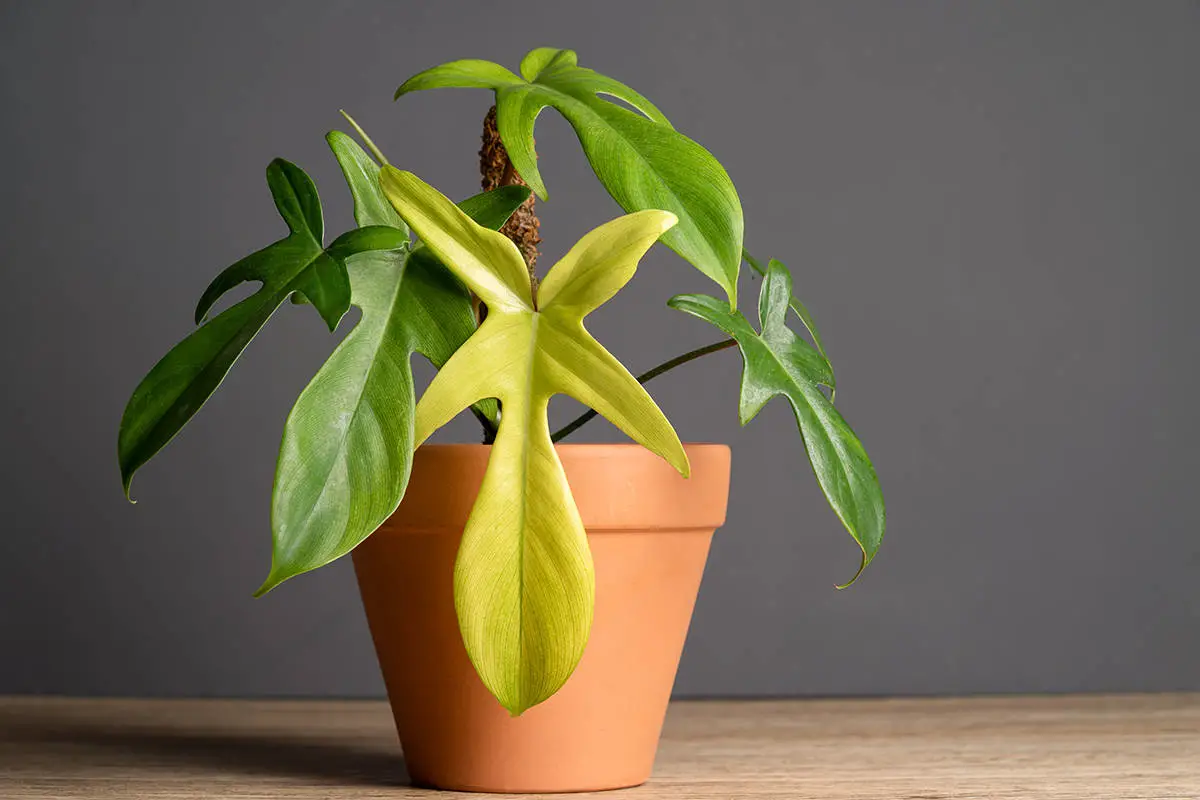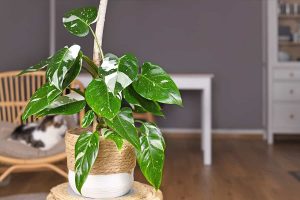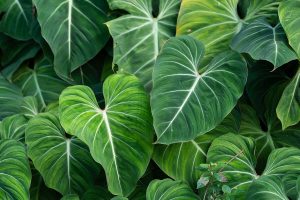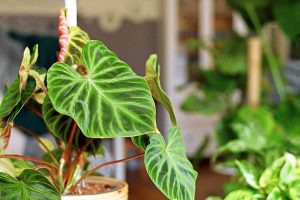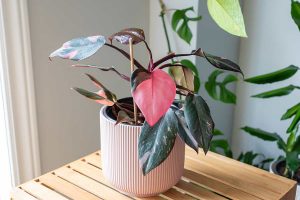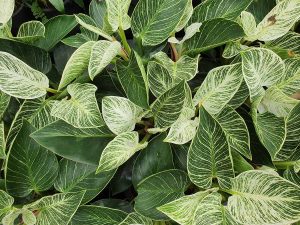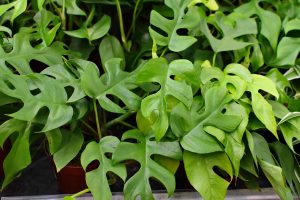You’re strolling through a garden center, and your eyes land on a plant with silvery, almost ghostly leaves. It’s unlike anything you’ve seen before. This is the Florida Ghost Philodendron, a plant that’s been capturing the hearts of plant enthusiasts everywhere. Its striking appearance and unique characteristics make it a conversation starter and a must-have for your indoor jungle.
Whether you’re a seasoned plant parent or just starting out, the Florida Ghost Philodendron brings a touch of exotic beauty to any space. Here’s our detailed to grow this beautiful houseplant to make it always look best.
Table of Contents
Light
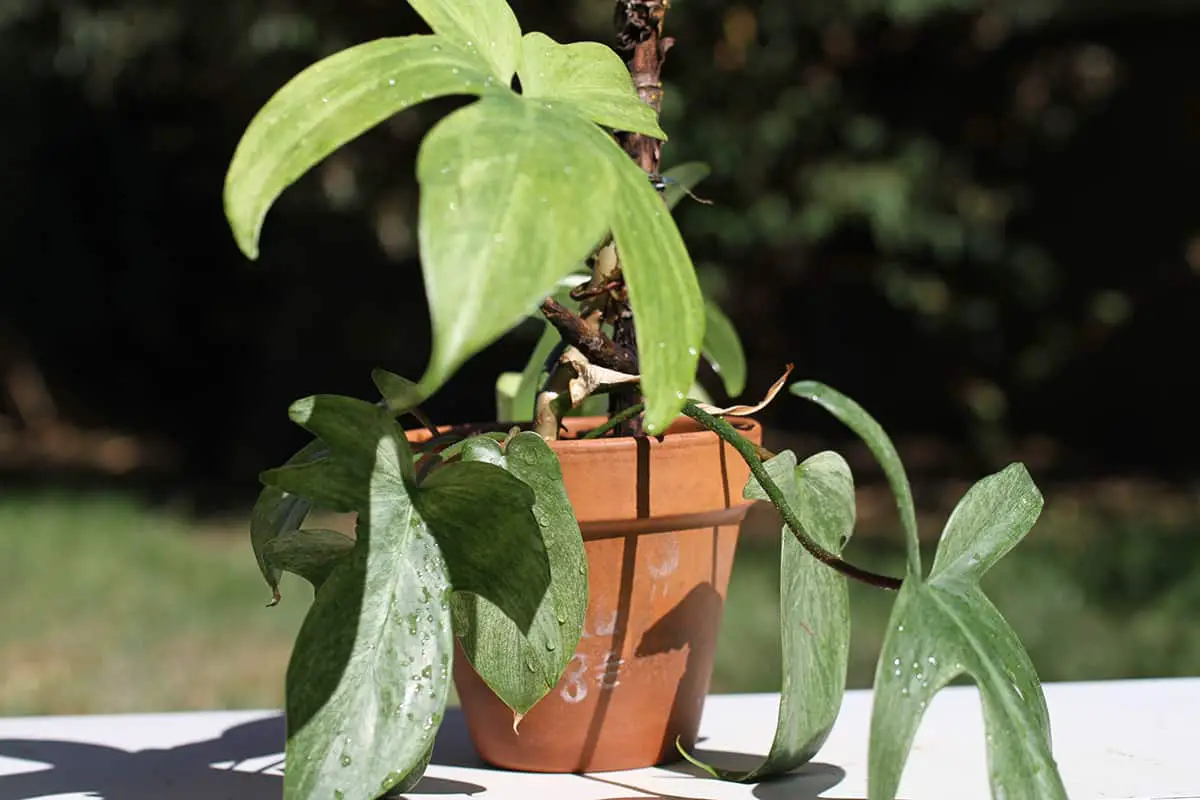
Bright, indirect sunlight works best for this plant. Position it near a window where it can receive a good amount of natural light, but not the direct sun rays.
Too much direct sunlight can cause the leaves to turn yellow and burn. On the other hand, inadequate lighting will make the plant struggle to grow and develop vibrant foliage. Ideally, your Florida Ghost Philodendron should receive about six hours of bright, indirect light daily.
When choosing the perfect spot for your plant, keep in mind that its natural habitat is the tropical rainforests, where it grows under the canopy of larger trees. Try to mimic this environment by providing dappled light. If you’re using artificial lighting, opt for LED or fluorescent grow lights. They offer the necessary wavelengths for the plant to thrive while maintaining a steady temperature in your living space.
Remember to rotate your Florida Ghost Philodendron regularly so all sides receive equal light exposure. This ensures even growth and maintains the plant’s attractive appearance.
Soil
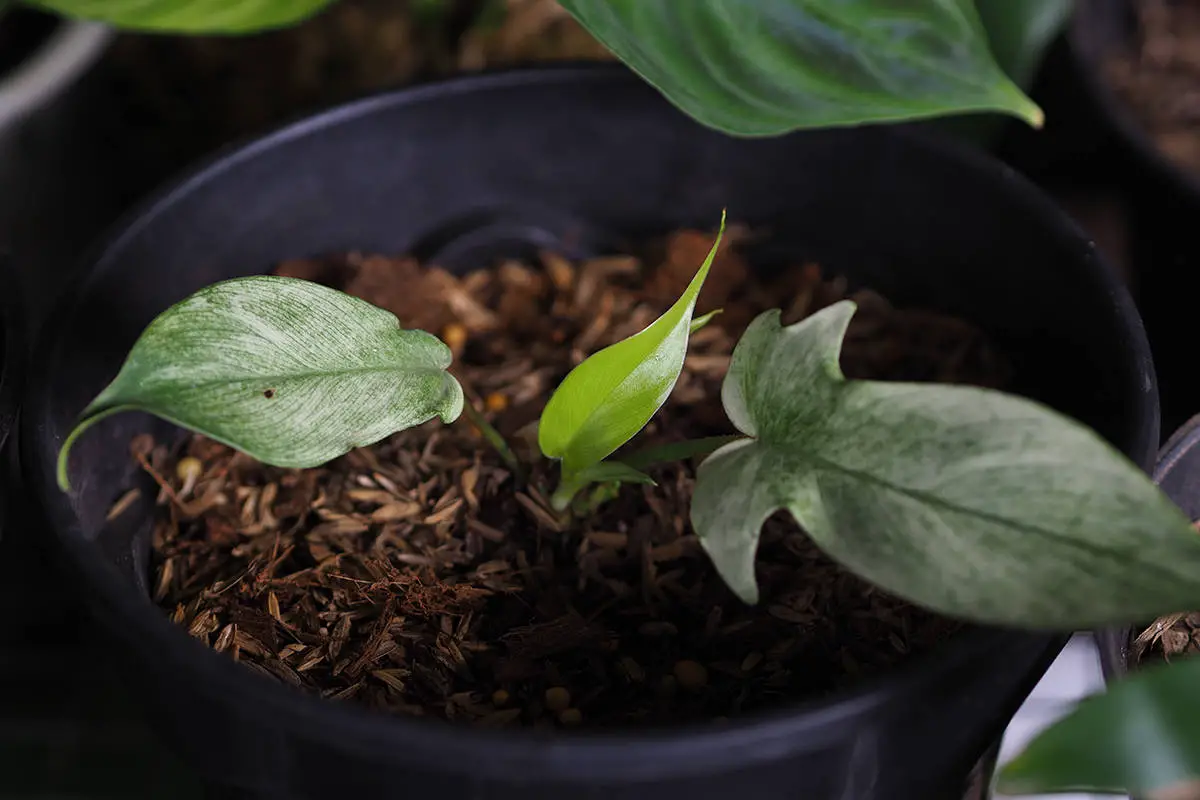
Your ideal choice is well-draining, nutrient-rich soil that has a slightly acidic pH. This type of soil is crucial for the healthy growth of your Philodendron.
To achieve this, mix organic matter such as compost, peat moss, or aged manure into your native soil, which will improve its composition. Additionally, you can work in some perlite or coarse sand to increase drainage capabilities. Proper soil mixtures will ensure your plant receives the necessary nutrients.
One important factor to consider is the plant’s pH requirements. Florida Ghost Philodendrons thrive in a pH range of 5.5 to 6.5. You can use a soil pH testing kit to ensure the soil meets this requirement. If you find that your soil is too alkaline, amend it with sulfur or aluminum sulfate to lower the pH level.
Regularly monitor the moisture levels in the soil, as Florida Ghost Philodendrons prefer to be evenly moist but not soggy. Too much water can lead to root rot, while too little can cause the leaves to yellow and wilt. Consider using a moisture meter to help maintain an optimum level of water for your plant’s well-being.
Water
These plants prefer consistently moist soil, but be careful not to overwater. Excessive water can lead to root rot, which can be harmful to your philodendron.
During the growing season, thoroughly water the plant when the top couple of inches of soil feel dry. In winter months, reduce the frequency of watering, as the plant’s growth slows down. Use a well-draining potting mix, which will help prevent the plant from sitting in soggy soil.
To maintain a high humidity level, use a humidifier or place your Florida Ghost Philodendron on a tray filled with pebbles and water. Keeping humidity levels between 60-80% will ensure a healthy, verdant philodendron.
Monitoring your plant’s water needs is essential for maintaining its growth and vitality.
Temperature and Humidity
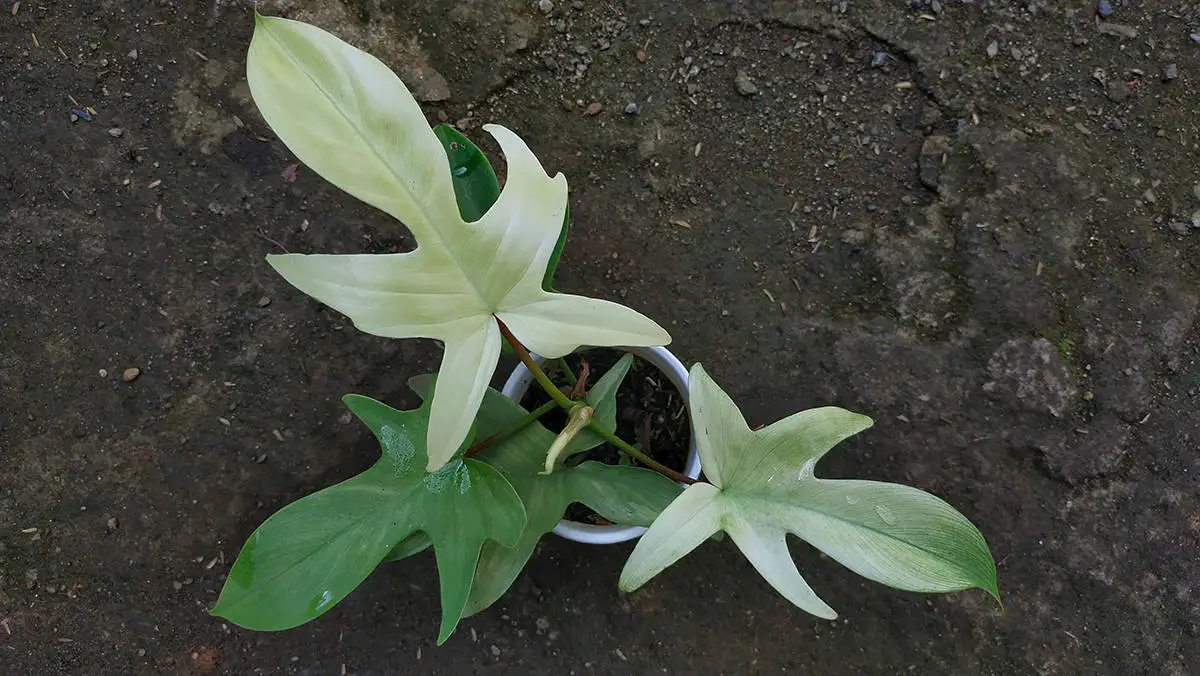
These plants thrive in temperatures ranging between 65°F and 80°F. Be sure to keep them away from drafts, air conditioning, and heating vents, as extreme temperature fluctuations can negatively affect their growth.
Humidity is another vital aspect of care for your Florida Ghost Philodendron. These plants prefer a humidity level of around 60%, which is higher than the average indoor environment. To increase the humidity around your plant, place it on a tray filled with pebbles and water, ensuring the pot does not touch the water. Alternatively, you can use a humidifier or regularly mist your plant with water.
In hot and dry environments, it’s essential to keep an eye on your plant’s condition. If you notice the leaves turning yellow or becoming crispy, it could be a sign of insufficient humidity.
Fertilizer
For optimal growth, apply a fertilizer with an N:P ratio of 3:1:2 or 3:1:3. This particular ratio promotes strong growth and vibrant foliage in philodendrons.
Place the fertilizer close to the beginning of the growth season, typically in spring or early summer. Keep in mind that both water-soluble and controlled-release fertilizers work well for this plant. If you opt for water-soluble fertilizers, you will need to apply them more frequently, generally every two weeks or during each watering session. On the other hand, controlled-release fertilizers can be applied less frequently, around every three to four months.
Remember not to overfertilize, as too much fertilizer can harm your plant and cause problems such as burned leaves or weak root systems. It’s best to follow the instructions on the fertilizer package and adjust according to your plant’s needs.
Propagation
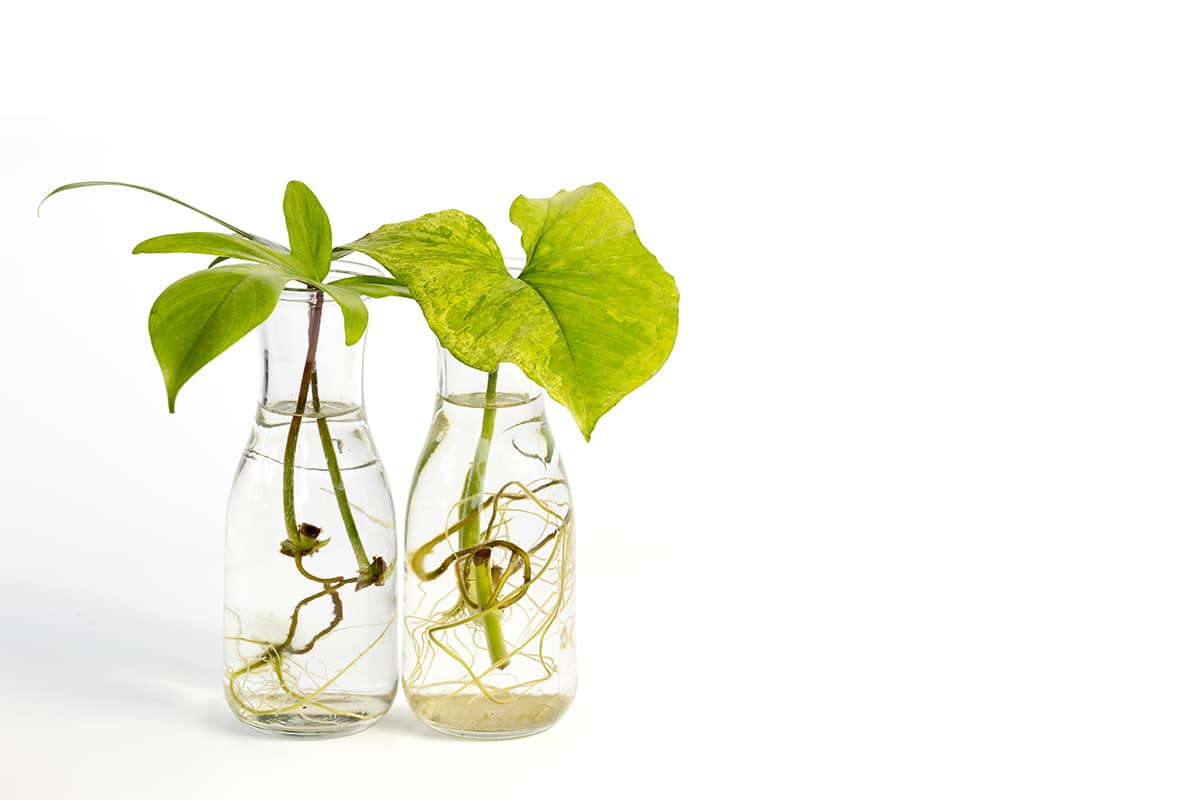
Start propagating by choosing a healthy stem with multiple leaves. Ensure that the section you select contains at least one node, as this is where new roots will grow. Taking stem cuttings is a popular and straightforward method for propagating Florida Ghost Philodendron.
One effective way to propagate your plant is by using water or well-drained potting soil. When rooting in water, keep the water clean by changing it frequently until you see new roots growing several inches long. If you prefer using a well-drained potting soil, insert the cut end of the stem into a pot containing moist soil. Then, cover the pot with a plastic bag to maintain humidity.
Temperature plays an important role in the propagation of your Florida Ghost Philodendron. Aim for a consistent temperature between 70°F and 85°F during the process. The cuttings will start developing roots in a few weeks, and keeping the humidity high helps to speed up this process. A combination of bright, indirect light and consistent temperature will promote the growth of a healthy new plant.
Once your propagation is successful and the new roots are grown, transfer your Florida Ghost Philodendron into a larger pot to give it room to grow. Choose a well-draining soil mix and select a spot with bright, indirect light to ensure the long-term health of your new plant.
Pruning
Pruning is essential for maintaining the health and appearance of your Florida Ghost Philodendron. To start, ensure you have clean, sharp pruning shears before trimming your plant.
To promote growth, remove yellow or dead leaves by cutting them off near the base. This step keeps the energy focused on producing new, healthy leaves. Additionally, remove any long aerial roots that may be unsightly or causing difficulty when handling the plant.
As the Florida Ghost Philodendron can be a vigorous grower, you may need to control its size. When reducing its size, it is crucial to maintain the plant’s natural shape. Make sure to trim the longer stems and branches back to the desired length while keeping the overall form.
Potting and Repotting
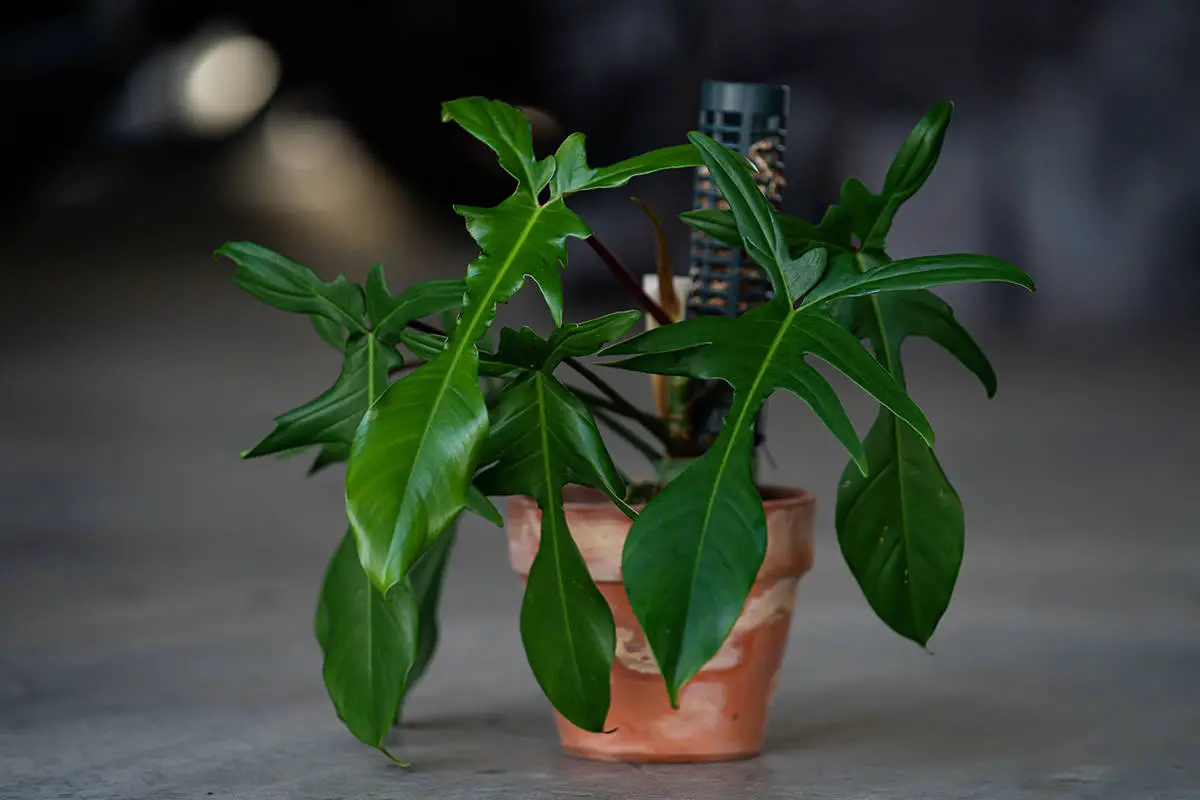
When you first pot a Florida Ghost Philodendron, select a container with proper drainage. Use a well-draining potting mix, such as a blend of peat moss, perlite, and vermiculite. This ensures that your plant receives the correct balance of air and moisture around its roots. Start by filling the container up to one-third with potting mix, then position the plant gently and fill it with more potting mix, leaving an inch at the top for easy watering.
Regular repotting is essential for healthy growth. You should repot your Florida Ghost Philodendron every two to three years. Monitor the size of your philodendron and the pot’s capacity. When the roots begin to circle the container or appear through the drainage holes, it’s time to repot. Choose a pot that is 2-3 inches larger than the current pot to offer optimal space for the expanding root system.
During repotting, gently remove the plant from its current container. Examine the root ball and trim away any dead or damaged roots. Next, prepare the new pot with fresh well-draining potting mix and repeat the potting process as mentioned earlier. Finally, water your Florida Ghost Philodendron thoroughly to help it settle in its new home.
Keep in mind that overpotting can lead to soggy roots and potential infections. Use your judgment when upgrading to a larger pot, keeping the size proportional to the plant’s growth.
Footnotes
Common Problems & Troubleshooting
Florida Ghost Philodendron plants are beautiful additions to your indoor space, but they can face some common issues that may affect their growth and appearance. In this section, we will discuss these problems and provide some troubleshooting tips to help you keep your plant healthy and thriving.
Yellow leaves can be a sign of overwatering or poor lighting. To prevent this, make sure your plant receives adequate light, preferably indirect sunlight. Water it when the topsoil feels dry and avoid keeping the soil soggy, as it can lead to root rot.
Brown leaf tips often indicate a lack of humidity. Philodendrons love humidity, so consider placing a tray of water near the plant, or use a humidifier to increase the moisture level in the room. Be sure to keep the plant away from any sources of direct heat, like radiators or vents, as they can cause dryness.
Pests such as aphids, mealybugs, or spider mites can infest your Florida Ghost Philodendron. Check the plant regularly for signs of these pests. If you spot any, try wiping the leaves with a soft, damp cloth or use an insecticidal soap to treat the infestation.
Slow growth might be caused by insufficient nutrients in the soil. To prevent this, feed your plant with a balanced houseplant fertilizer during the growing season, but be careful not to over-fertilize, as this can cause leaf burn.
